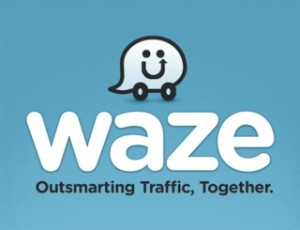A Baker’s Dozen, 2015 Edition

As is our annual tradition, this blog provides a year-end review of how the Internet providers at the top of our Internet Intelligence – Transit global rankings fared over the previous year. The structure and performance of the Internet remains a huge blind spot for most enterprises, even those critically dependent on it for business operations. Whether it’s the next 3 billion people coming online, poor performance due to suboptimal routing, impaired connectivity due to natural disasters or sabotage, slow DNS performance, routing leaks, or security breaches of a trust-based Internet infrastructure, Dyn provides critical insight into the structure and performance of the Internet, both real-time and historical, via its Internet Intelligence product suite. More importantly, our services help our customers make the changes necessary to optimize Internet availability, reliability, and reach in a very dynamic environment.
Back in 2008, we chose to look at the 13 providers that spent at least some time in the Top Ten that year, hence the name “Baker’s Dozen“. We repeated that exercise in 2009, 2010, 2011, 2012, 2013, and 2014. During the past 8 years, I’ve Continue reading
Network Automation Using Python: BGP Configuration
Kirk Byers presents a Python programming example for configuring BGP on Arista EOS, Cisco IOS-XR, and Cisco IOS.
Personal Data Services Promise User Privacy
An emerging technology could help enterprises protect customer PII.
Enterprise Sticking With Private Cloud
This slide was posted on Twitter this morning rom Sam Charrington: This matches with what I hear and see in the market. Most enterprises will build private clouds They have so much data in their existing DCs that migrating is impossible/impractical That OpenStack (not VMware SDDC) is the preferred platform Some key market points that I […]
The post Enterprise Sticking With Private Cloud appeared first on EtherealMind.
Host-to-Network Multihoming Kludges
Continuing our routing-on-hosts discussions, Enno Rey (of the Troopers and IPv6 security fame) made another interesting remark “years ago we were so happy when we finally got rid of gated on Solaris” and I countered with “there are still people who fondly remember the days of running gated on Solaris” because it’s a nice solution to host-to-network multihoming problem.
Quoting RFC1925, “It’s easier to move a problem around than to solve it” and people have been extremely good at moving this particular problem around for decades.
Read more ...Datera Enters the Cloud Storage Marketplace with $40M
 The startup goes up against Red Hat Ceph and NetApp SolidFire.
The startup goes up against Red Hat Ceph and NetApp SolidFire.
Cisco Live 2016 – Everything Is Coming Together
It seems that Cisco Live is about the only thing I blog about in the last…well, few years. At least I’m still writing, even if it is twice a year. :)
Here’s a summary about Cisco Live for those who live in a dark hole. It’s July 10 – 14, 2016, in Las Vegas. If you do anything with Cisco, you should go. If you do anything with technology that isn’t Cisco, you should go. Bring your significant other. There’s plenty to do for everyone. Anyway, on to the details for this year’s show.
The Mandalay Bay’s South Convention Center will be our campgroun this year. This is the same place from back in 2011, but with quite a few updates to the layout. I can’t remember the numbers from the last time, but I imagine that number will be close to double this year. I have all confidence that the convention center can handle us, though. They did such a wonderful job last time. I hope the food is as good as I remember; it’s been pretty poor going the last few years in Orlando, San Continue reading
My Current IWAN Analogies
I use analogies. Just how my brain works…. and how I sometimes learn and teach. Token-ring source-route bridging analogy was “breadcrumbs thru the network”. Analogy for DLSw+ was a boat getting the breadcrumbs over water between 2 islands.
I think I like analogies cause…. to be superbly honest… when I came to work at Cisco back in 1996 I only knew SNA. I did NOT know IP. I was quickly immersed into learning IP. But I mean seriously… using acronyms to explain other acronyms you don’t understand? Don’t get me started!
Ready to play? Yea yea… my brain jumps around with varying analogies. If one doesn’t hit ya maybe the next will.  Happy nerding!
Happy nerding!
Waze on Steroids
 Imagine you own a rental car agency with 2 locations across town from each other. Your employees are constantly driving the cars back and forth between the two locations to balance out inventory.
Imagine you own a rental car agency with 2 locations across town from each other. Your employees are constantly driving the cars back and forth between the two locations to balance out inventory.
If the employees hit issues during the drive (potholes, glass, mud, sand, dirt, major traffic, construction) this is going to cost your company.
So you can see how knowing what is going on via the varying paths between your locations is critical to your Continue reading
Juniper Networks Warns of 1Q Revenue Slip
 The company blames enterprise sales and delayed service provider deployments.
The company blames enterprise sales and delayed service provider deployments.